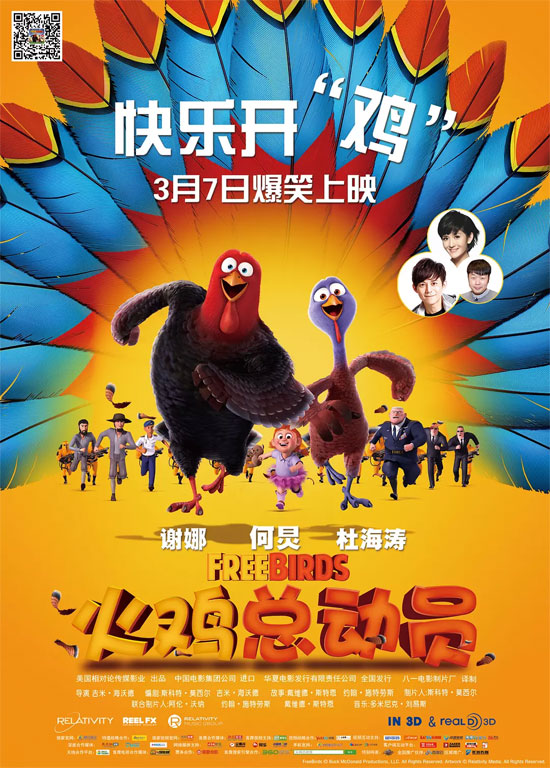Film Name: 火鸡总动员 / Free Birds

Thanksgiving is not a global pop culture phenomenon like Christmas; it is a regional tradition specific to North America. In this sense, films based on this theme rarely achieve box office success.
Nevertheless, the film does offer Chinese audiences some insight into Thanksgiving culture—its origins, the tradition of eating turkey, and so on. However, it clearly only scratches the surface of Thanksgiving’s outward trappings without delving into its spiritual essence. While it’s not essential that the turkey, originally a symbol of Protestant settlers’ gratitude toward Native Americans, undergoes self-redemption today, what matters is how this self-redemption aligns with the spirit of Thanksgiving.
In truth, for centuries the turkey has graced people’s tables as a festive meal, and humanity ought to feel gratitude toward the bird itself. Had the film ingeniously grafted the relationship between turkeys and humans onto the historical dynamic between Native Americans and Protestant settlers, it might have transcended the overly familiar theme of mere personal growth for its protagonists. In other words, it introduces the novel concept of viewing Thanksgiving through the turkey’s perspective but fails to reach the heights this idea could have achieved.
If anything left a lasting impression, it was the two iconic turkey colors—blue and red. I specifically looked up images, and turkeys do indeed have blue and red heads. But the film’s insistence on using two distinct colors for the turkeys, rather than making them all one color, must have been intentional. This intent surfaces in a subtle detail: when the protagonists search for the time machine at the base, the ground markers are also blue and red.
The blue markers point to the exit, while the red ones lead to the time machine. Blue turkey Ricky, unwilling to take risks, chooses the blue path; while the red turkey, Jack, is determined to use the time machine to travel back in time and prevent the tradition of his kind ending up on Thanksgiving dinner tables. He chooses the red path. The blue path represents contentment with the status quo, while the red path is uncertain and fraught with danger. The blue turkey excels in wisdom, while the red turkey excels in physical strength. These subtle parallels are no coincidence.
When blue and red do not intertwine, they fail to ignite the sparks born from the collision of life’s or emotion’s essential elements—tranquility and passion, intellect and physicality. Yet life, as depicted in the film, inevitably weaves these two colors together as if by destiny.
From the moment Ricky met Jack, it was destined to make the leap from blue to red. If stepping onto the red marker while searching for the time machine was merely a forced step, then its final transformation from fugitive to brave soul was a voluntary leap. And when Jack finally drew blue lines across his own face, he too acknowledged the value of blue from the depths of his heart.
The blue and red of the turkeys embody a space for mutual learning, recognition, and respect. Blue and red should even be grateful for each other’s existence, having evolved from conflict into harmony. Does this not mirror the relationship between Protestant immigrants and the indigenous peoples of North America? While clashes between different cultures are inevitable, what matters more is the capacity to learn from, acknowledge, and respect one another. This, surely, is the essence of gratitude.
Please specify:Anime Phone Cases » Free Birds 2013 Animation Film Review: Crossing Blue and Red